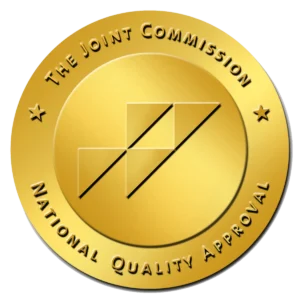The percentage of American adults identifying as lesbian, gay, bisexual, or transgender (LGBT) increased to 4.5 percent in 2017, up from 4.1 percent in 2016 and 3.5 percent in 2012 when Gallup began tracking the measure. According to Gallup, “the expansion in the number of Americans who identify as LGBT is driven primarily by the cohort of millennials, defined as those born between 1980 and 1999.”
The number of older adults identifying as part of the LGBTQ population has been going up as well. “There are roughly 1 million lesbian, gay, bisexual, transgender, and queer (LGBTQ) adults who are 65 years or older, and this number is expected to double by 2030,” writes Yale psychiatrist Kevin Johnson in his article “Special Issues in LGBTQ Geriatric Psychiatry” in the Psychiatric Times, in which he explores the particular healthcare needs of aging LGBTQ people. The problem is, we don’t really know much about them: “Before 2000, research was limited to a few small studies,” says Johnson.
The rapidly evolving terminology around sexual orientation and gender identity alone can be very confusing for cisgender people—a term used for people whose gender identity matches the sex they were assigned at birth. “There are now many terms that capture the diversity of the LGBTQ community. Sexual orientation is a broad term used to describe a person to whom someone is physically, emotionally, or romantically attracted. Some may identify as straight, lesbian, gay, bisexual, pansexual, queer, or a number of other sexual orientations,” writes Dr. Johnson. And then there is gender identity. Some people do not identify with some, or all, of the aspects of gender assigned to their biological sex, identifying as transgender, genderqueer or non-binary instead. Some societies have third gender categories.
Gender identity and sexual orientation should not be confused, as Dr. Tammi Furman Dice and her husband, Farley Center therapist Tony Dice, M.S.Ed., explained in their presentation as part of the Williamsburg Place Lecture Series. A biological female identifying as a man (gender identity) but attracted to females is heterosexual (orientation) not lesbian. Tony himself started the lecture by introducing himself as male and pansexual—a person sexually, romantically or emotionally attracted toward people regardless of their sex or gender identity.
This may certainly be confusing for cisgender therapists and clinicians and there are pitfalls galore. “In the clinical encounter, knowing and respecting a patient’s preferred pronouns are essential to creating a safe space,” says Johnson. “Don’t assume patients are heterosexual or cisgender. Clinical questions should be inclusive and avoid making assumptions about the patient’s sexual behavior or relationships.”
Older LGBTQ people will be particularly wary since they grew up with illegality and perceptions of pathology. The transgender and gender-nonconforming community has experienced “a long history of stigma, prejudice, and fear,” says Dr. Johnson—including from the medical community. Homosexuality was removed from the Diagnostic and Statistical Manual of Mental Disorders (DSM) as late as 1973. “Prior to this, it was considered a sociopathic personality disorder that warranted the need for numerous conversion therapies to ‘cure’ individuals with same-sex attractions and/or behaviors.” The World Health Organization dropped “gender identity disorder” from its official manual of diagnoses only this year. The DSM-5 continues to list “gender dysphoria” as a psychiatric disorder.
According to Human Rights Watch, LGBTQ people face higher rates of poverty, stigma, and marginalization, which puts them at greater risk for sexual assault. They also face higher rates of hate-motivated violence, which can often take the form of sexual assault.
Unsurprisingly, decades of stigmatization and victimization take a heavy toll. “LGBTQ older adults are more likely to have poorer mental health: 31 percent of LGBT elders have symptoms of depression—2 to 3 times higher than the general geriatric population; 39 percent report having suicidal ideation at some point in their lives. Among the transgender elderly, 48 percent report symptoms of depression and 71 percent report a history of suicidal ideation. And, LGB individuals are 2 to 3 times more likely to have a substance use disorder,” summarizes Dr. Johnson the elevated risks for this cohort.
They may need help, but they don’t necessarily trust their doctor. “Fear of discrimination or going back into the closet also serves as a major barrier to seeking healthcare. Many are reluctant to come out to their clinicians—21 percent report not revealing their LGBTQ identity to their healthcare provider.” Among bisexuals, this percentage is even worse.
The medical community should undertake efforts to change that. Dr. Johnson suggests seven things clinicians should do to make their LGBTQ patients more comfortable.
- Educate yourself on the health needs of the aging LGBTQ population.
- Familiarize yourself with the concept of gender diversity.
- Educate your nursing and ancillary staff.
- Add questions about sexual orientation and gender identity on registration forms.
- Place objects in your office or waiting room that indicate your office is a safe space.
- Check whether your institution’s nondiscrimination policies include sexual orientation, gender identity, and gender expression.
- Offer gender-neutral bathrooms for transgender and gender-nonconforming adults.
“The aging LGBTQ population consists of numerous diverse, rich, and complex communities,” Dr. Johnson concludes his article. “While there are increased rates of depression and substance use disorders and increased reports of victimization and discrimination, there is also strong evidence of resilience and high rates of successful aging. Regardless, clinicians can play a vital role by creating a safe and open environment that allows people to be themselves.”
The geriatric program at The Pavilion at Williamsburg Place is designed specifically for adults ages 55 and over—including LGBTQ patients. Presenting symptoms may include behavioral disturbances, severe depression with suicidal thoughts, anxiety, hallucinations, and delusions. Common admission diagnoses include dementia, depression, anxiety, mood and behavior changes, and substance misuse. Medical specialists may be consulted to manage underlying physical illnesses that may be contributing to behavioral, emotional, and cognitive instability.





